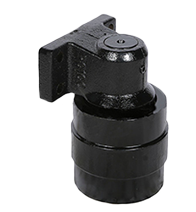
What is the final drive of an excavator?
As a complete unit, an excavator final drive motor provides the power to turn the tracks and move the excavator. Simply stated, it is composed of two primary components that are sealed and joined together – the first is the hydraulic “motor” that receives energy from the main hydraulic pump.
How does an excavator drive work?
The pinion gear shaft extends from the bottom of the swing drive and interacts directly with the slewing gear in the carbody of the excavator. The interaction of the teeth on the pinion and the teeth in the slewing gear rotates the swing motor and, in turn, swings the excavator's house.
Gears
When you’re working with heavy machinery, even of the compact excavator variety, there’s a lot going on. Across a broad spectrum of all types of machines, the engine powers multiple systems that increase torque at different speeds in different places, including the final drive, the transmission, the torque converter or flywheel, the hydraulic pump/motor system, and/or the differential, depending on the design and application of the machine.
All of these gearing systems are made up, more or less, of pinion gears, ring gears, and hydraulic fluid and/or gear lubricant, and they’re all connected. The torque converter, flywheel, and/or hydraulic pump transfers engine power to the transmission device. The transmission device then provides power to the differential or final drive. In a standard axle-driven design, the differential gears then change the direction of that power in order to turn axle shafts. Alternatively, an excavator final drive has a planetary gearing system that slows things down from what is supplied from the attached hydraulic motor, increasing torque, and making it possible for the machine to do more work.
Drive’s sun and planets
A relatively small device, your final drive motor is what powers the tracks on your mini excavator. It’s essentially divided into two halves. The first half is the hydraulic travel motor – that’s the back side where the hydraulic hoses are connected. It gets its energy from the main pump on your machine. The high pressure flow supplied by the main pump spins a rotating group of pistons on a swash plate in the hydraulic travel motor, which engages a super-strong shaft that runs through to the other half of the final drive, the final drive gearbox. Because it uses a planetary gear configuration, the final drive gearbox is able to reduce the speed supplied by the shaft, which increases the available torque to rotate the hub to which the track sprocket is mounted. This engages the tracks on your compact excavator with tremendous torque, moving the machine in the direction you want it to go.

Sign up to our newsletter for the construction machinery